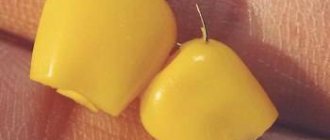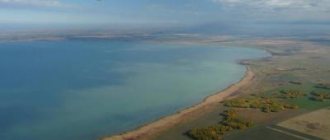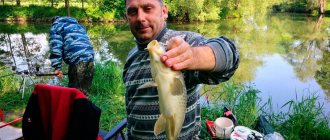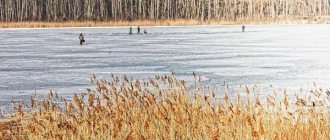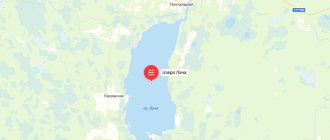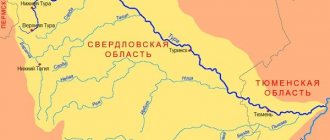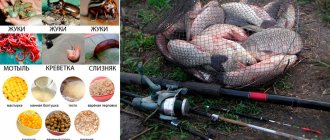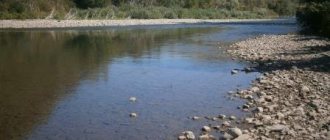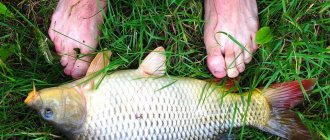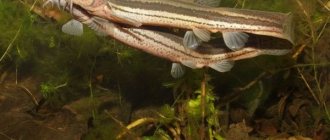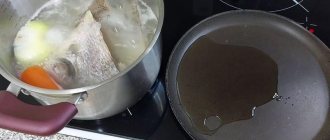Do bream bite on lard?
Fresh and salted lard, with or without a slot, is suitable for catching bream. In addition, all kinds of natural additives are added to the product, giving additional taste and smell: garlic, pepper, etc. Bream is a capricious fish. There is no universal recipe for preparing bait for it - today fish can bite well on lard with garlic or dill, but tomorrow they will prefer simple fresh fat. In addition, fish is quite favorable towards smoked or boiled products.
Who gets caught for lard?
In the reservoirs of our country, almost all representatives of the order of carp fish are perfectly caught using bait from this high-calorie food product, excluding only those with poorly developed mouthparts. An excellent addition to greasy bait for carp and similar representatives of the ichthyofauna will be the aroma of garlic.
Large crucian carp and tench are caught well. You can also catch large rudd, silver bream, and very large fish such as catfish. Respects lard and bream, whose appetite is constantly increased. He enjoys this product with pleasure, and you can fish for it in many reservoirs.
The best time for fishing for lard is the period before the onset of cold weather, when the fish begins to prepare for hibernation and is actively fattening.
Large roaches bite well on such an unusual bait, since small individuals simply cannot swallow the appetizing pieces on the hook.
In which bodies of water can you catch bream using lard?
Bream is a typical species in most water bodies in the middle zone. You can fish for lard in reservoirs with running or standing water. We can say that in “quiet” water the effectiveness of such bait is even higher, since the current does not carry away the smell of the bait; it will spread evenly for a long time within a limited location. For example, on the Oka you can fish with pork fat bait all year round.
Did you know? Bream is the longest-living fish among all fish species in general, not just cyprinids. Its lifespan can reach 20 years, and the maximum is 23 years.
This is a river with a current of medium intensity, so bottom gear with a feeding spring has proven to be quite effective for fishing. In addition, such bait is good for catching rudd, ide, crucian carp, silver bream, grass carp, carp, etc.
Salo for bream
Previously, when there was a lot of bream and in the fall entire towns of fishermen with donks appeared along the banks of rivers, the use of lard in bait was not surprising. In some places this is an ordinary working bait. Lard is convenient to use on gear for long-distance casting - it holds perfectly on the hook, and small items cannot quickly fray the piece. Bream react to lard more often in cold water, in spring or autumn. But even in the summer there are cases of biting on this bait. Article about fishing for bream.
Lard has positive buoyancy when soaked and cut into small pieces. This is exactly how it should be used. Typically, this bait is used on the same gear as foam balls. That is, it is a spring or a watermelon covered with bait, and short leashes with hooks nearby - one or several. Due to positive buoyancy, the bait works like foam, rising from the bottom and oscillating in the water near the food in a spring. However, in addition to external appearance, this bait has its own animal aroma and taste.
Recipes for making lard for bream fishing
You need to use the part of the fat located directly under the skin as bait. There are a lot of connective fibers in this place, thanks to which a piece of fat will stick well to the hook. This is especially important in the summer, since in the heat the lard melts and becomes unstable to the encroachments of small fish. Fresh, salted, soaked in brine or smoked lard is suitable for cooking.
Prepare bait in this way.
- To cut pieces of the desired size, the product must first be placed in the freezer . After the lard freezes, the skin is removed from it and the layer directly underneath it, 6–8 mm thick, is cut off. This layer should be cut into pieces of the required size. The smallest are for small fish, for larger fish - cubes with a side of about 1 cm.
- The next stage is fat deepening . Divide the entire mass of lard into 2 parts and put them in different containers. Finely dice the garlic (do not squeeze it through a press!), combine it with one part of the lard and mix.
- Finely chop the dill and combine with the second part of the lard, mix . Cover the jars with the contents, shake well to mix the ingredients and refrigerate for a day.
Catching ide with lard
As a rule, when searching for ide, and especially in the fall, it is best to look for it in those places where pike live. Oddly enough, the ide is very closely friends with the “toothy” one, and areas overgrown with aquatic vegetation, flooded trees and deep holes are natural sites for the ide.
Bait and lure for ide
In autumn, and especially in Siberian reservoirs, catching ide with lard is common. Our great-grandfathers also used such bait when catching this tasty and rather lively fish. There are no special tricks when fishing with lard. Take an ordinary piece of raw lard (100-150 grams), cut it into small cubes (the size of a pea) and place it in a small plastic box filled with warm water. First, you can add a drop of anise to warm water. The principle of preparing bait at this stage is complete.
When fishing for ide with lard, it is best to fish with bottom gear or a feeder. It is imperative to feed ide, and generously. In winter, this fish is not so active, and in the fall the ide has to fatten up more fat reserves in order to survive the harsh winter days. Lard, a very high-calorie delicacy, and inactive fish cannot refuse the increased calories. The bait will be able to quickly attract schools of ide with its smell, which can subsequently become an object of fishing for the angler.
Ide parking place
In addition to the places where pike can most often be found, ide can also be found in shallow areas of water. Autumn river riffles become densely populated with ide for a couple of weeks. It stops at such points for further migration to deep and quiet sections of the river. Along the way, the ide feeds on the rifts with small fish and the remaining insects that randomly fall into the river and flow downstream to the lower reaches. The short period of ide migration begins around September 15 and lasts until September 25, it all depends on weather conditions and water levels. After which, the ide settles into deep and extensive pools and prepares for wintering.
Catching ide in winter
When the first ice appears on rivers and lakes and reaches ten centimeters thick, fishermen go hunting for white fish. The main purpose of fishing is bream, roach, as well as ide. Ide, of course, is a casual catch; it most likely becomes a bycatch rather than the main prey. Catching two or three ides in one fishing day is considered a huge success for one fisherman. The fish at this time is very capricious and choosing the right bait for it, as well as finding the fish itself, is a huge success.
The best bait for ide in winter is considered to be a couple of maggots and a small piece of raw lard. The game should be played slowly and monotonously, near the very bottom. The fishing line should be used 0.012 - 0.016, since the ide is very careful at this time and on a thicker fishing line, it may simply end up taking the bait. It is extremely rare that an ide may be tempted by a small winter spinner or a balancer. But when fishing with a spoon, the game should be as slow as possible and with long pauses, from 8 to 14 seconds. Large ide, which weighs more than 1 kg, can be caught very rarely in winter, one might say isolated cases. But small individuals behave more actively, so catching 400-500 grams of ide from a hole can be considered a huge success.
Catching ide in a strong current from a boat
Catching ide with lard from a boat in the fall also gives excellent results. The secret of success directly depends on the choice of fishing location. A similar place on a lake or river can be easily detected using an echo sounder or detected visually. The fact is that ide, like asp, when feeding, squeezes the fry from the depths to the surface of the river. Seeing such a “fight” of a predator will not be difficult. More often, such a “fight” occurs in sections of the river with a strong current - riffles and flows of water with a reverse flow. You can get to such places only by floating craft.
The boat or motorboat is anchored above the “cauldron” where the ide “fight” takes place, about 15-20 meters. The best tackle for such fishing would be a riding donka. Installation of the donkey is very simple: the main line is 40-50 meters long, 3-4 leashes are 25-35 cm long and equipped with sharp hooks No5-No7. The same pieces of raw lard are perfect as bait. In a strong current, the donka produces wave-like movements with a dive to a depth of 70-80 cm and returns to the surface. Thus, the top layer of water is completely fished.
The downside to this fishing method is that fish escape very often, since in a strong current, the ide misses when it hits the bait, and the hook only catches on the edge of the lip.
When fished out, the lively ide is able to easily break free with a powerful jerk. But out of ten such bites, it is still possible to catch 3-4 specimens. Share on social networks:
Storage rules
Lard should be stored in a refrigerator bag or wrapped in foil. The fact is that in hot weather, after thawing, the product quickly begins to deteriorate and lose its quality.
Find out how to catch bream in September on a feeder.
In addition, you should be aware of some features of nozzle storage:
- You should not keep the bait in a plastic bag, especially in summer; it is better to wrap it in newspaper or a piece of fabric;
- no need to cut the entire mass of bait. It is better to prepare a small number of attachments, and wrap the remaining piece of lard in foil and wrap it with cloth, creating something like a thermos.
Selection and assembly of gear
The choice of rod depends on the characteristics of the fishing spot.
The following float gear for catching bream can be used:
- the fly rod is quite effective at close range;
- if fishing takes place in cramped conditions or with strong currents, plug fishing rods are used , which make it possible to deliver the equipment exactly to the right place. In addition, in areas with “fast water”, you can use such tackle with a special float designed for “hold” fishing;
- when there is a strong current and there is enough space on the shore for casting, they use Bolognese tackle for fishing “in the wire”. In this case, it is better to hold the rig, not allowing it to float with the flow;
- For the longest cast, match fishing rods are used.
For float fishing, lard is cut into small pieces (5x5 mm). Lard bait is effective when used with donks of various configurations. Half-donk "on the knock." This method has proven itself well for fishing near the shore, especially in the spring, during high water. At such times, using float tackle is not entirely convenient, due to the fairly strong current . Using a real bottom fishing rod is also not justified, since the fish is close to the shore, and it is not possible to take advantage of all the advantages of a real bottom fishing rod.
Important! You can determine when a fish is biting by the tip of the rod: as soon as the bream bites, it will begin to make sudden movements. These throwing will be responded by tapping the upper part of the fishing rod, hence the name of the tackle.
Although the fishing line of such a tackle is not too thick, it will not be carried away. The bottom fishing rod is equipped with springs with bait, the weight of which ranges from 20–40 g. The length of the rod does not play a big role. It is more advisable to choose the most elastic tackle - to better practice the movement of the bream. Otherwise, the trophy will be removed and gone. The simplest reel will do, because the bait will not need to be cast in the water column. When catching bream with lard, you won’t have to cast the rod often; you’ll spend more time waiting for a bite. So you can take a spinning reel.
Donka should consist of the following elements:
- spring with its own load;
- carbine equipped with a swivel;
- a thin leash, up to 10 cm long, with a hook attached to one side.
When catching bream with a bottom rod, self-hooking often occurs. So you need to take the most durable and large enough hooks that will scare away small fish. Sometimes fishermen hide hooks and give them buoyancy not with foam, but with pieces of lard. This product is used not only for bait, but also placed in feeders. Bottom tackle with rubber shock absorber. For such a donkey, an anchor-type weight is used, to which an elastic band, an insert made of strong fishing line, connected to several leashes and the main fishing line are sequentially attached.
Catching bream with lard and garlic: fishing on the Oka, video, tackle, what kind of lard to take?
Catching bream is not very easy, since it is always very careful, and is also selective in its choice of food. In order to catch as many fish as possible, you should correctly select not only the bait, but also the tackle itself.
Not so, experienced fishermen discovered that bream can be easily caught for lard. Even well-fed fish bite on such bait very willingly. Largely due to its structure, lard is very convenient for baiting: it holds perfectly on the hook and does not slip off during casting.
As fishermen advise, lard with streaks should be applied, and a layer should be taken that is quite close to the skin. Bream actively bite on fresh and not frozen lard. The day before, fishermen cut it into small pieces and put it in the freezer overnight.
During the fishing process, the bulk of the lard is kept wrapped in several layers of paper or thick fabric. Only a couple of pieces are taken out from there so that they can warm up before they go to the bottom of the reservoir. This approach helps prevent the lard from spoiling, especially on hot days.
In principle, you can do it a little differently: dig a not too deep hole and put all the available stock there.
There are several useful tips that can make this bait even more attractive to the fisherman:
- Lard goes well with other types of bait - bloodworms, worms and others. They will act as a natural flavoring agent that will attract fish even from a fairly long distance;
- Lard can be slightly colored using food coloring.
How to properly assemble the tackle when catching bream with lard?
The average weight of bream ranges from one to three or four kilograms, but quite large specimens can be caught, weighing five kilos or even more. In principle, it is clear that bream is far from the largest fish that lives in the waters of the middle zone, and moreover, it is not very strong.
However, bream fishing tackle should be as durable as possible. It is very convenient to use the so-called half-bottom, on which fish actively bite in the spring months, especially immediately after the ice melts or during high water. The fact is that fishing during this period using a float rod is inconvenient due to the fairly strong current.
It is also difficult to use an ordinary bottom fish at this time, since it is effective in deep water, and bream during this period comes close to the coastline. The maximum thickness of the fishing line for this gear is about 0.4 mm , the leashes are taken even thinner - no more than 0.17 mm, thicker gear will scare away this cautious fish.
By using a thin fishing line, you don’t have to worry about it being carried away by the current. It usually does not have high tensile strength, but this is easily compensated for by the flexible rod.
What kind of lard should you take for fishing bream?
The success of fishing largely depends on the quality of the bait. In principle, fishermen use salted or unleavened lard, with or without streaks, with the addition of various flavorings such as pepper or garlic, and so on.
The choice of bait directly depends on the taste preference of the fish. The fact is that bream is picky in terms of food choice , so one day it can eat lard with the smell of garlic, and the next it will give preference to ordinary unleavened lard.
As mentioned earlier, lard is first cut into small pieces. Their dimensions should be approximately 0.5x0.5 cm. They immediately think about whether this bait will be combined with maggots or bloodworms.
It is absolutely not necessary to cut the entire piece of lard, because it is possible that after you start fishing, pieces of other sizes - larger or smaller - will be more suitable. It is advisable that the lard be as fresh as possible.
Lure
Although lard is an excellent bait when fishing for bream, it is not advisable to use it as bait. The fact is that it will either float to the surface or be located close to it, so adding lard will not affect the effectiveness of complementary feeding in any way.
The bait must necessarily consist only of natural animal-type flavorings. The most successful solution would be to use maggots or bloodworms. You can catch bream with lard using bottom or float gear , and the fish will be excellent for lard not only in the warm season, but also in winter.
It is best to store lard in a cooler bag or wrap it in foil, since in hot weather it thaws almost instantly and begins to spoil.
Bream will no longer bite on spoiled lard, but catfish can swallow such bait, but landing it on the surface of the reservoir will be much more difficult, since this fish is stronger.
Half-bottom (catch fishing)
This type of gear is excellent for fishing a body of water nearby near the coastline, especially in the spring months during high water. At this time, the float rod will create certain inconveniences due to the fact that the current in the reservoirs is quite strong.
It is not possible to use a full-fledged bottom fish, since the presence of fish in the area of the coastline does not allow the use of all its positive qualities. Despite the fact that the thickness of the fishing line of such gear is not too thick, it will not be carried away by the current.
Due to the fact that the fishing line is quite thin, it can break if the fish makes a strong jerk, but this disadvantage is successfully compensated for with the help of a flexible rod.
This indicator is called “test”, it is indicated on the butt part of the tackle. Depending on the size of the test, a specific sinker is selected.
If the rod is homemade, then the most suitable weight of the sinker is chosen empirically . You can determine whether a fish has bitten using the rod tip.
A bream that has bitten senses danger and begins to make sudden movements that respond with knocking or fairly strong blows on the tip of the rod - hence the name of this tackle.
Fishing for bream with bottom tackle
When using lard as bait, donka is used much more often compared to other gear. These products are not only very catchy, but also very simple and cheap, and they can also be assembled right on the shore from scrap materials.
The tackle often has springs with bait, the maximum weight of which should be about 20-40 grams. This factor is taken into account when choosing a fishing rod, the length of which, in principle, does not play a special role.
It is best to take the most elastic tackle so that it can properly work out the sudden movements of the fish, otherwise the bream that bites will be removed from the hook and leave.
You can take the cheapest reel, since you won’t have to cast the bait in the depths of the reservoir. If you catch bream with lard, you won’t have to cast bait too often; most of the time is spent waiting for the fish to bite. In this regard, even a spinning reel is quite suitable.
In principle, a bottom fishing rod should consist of the following elements:
- A spring with good capacity , and it must also have its own load;
- Carbine equipped with a swivel;
- Thin leash , at one end of which there should be a hook. The length of the leash is selected to be no more than 10 cm so that it is located close to the spring.
When catching bream using bottom tackle, self-hooking often occurs, so the hooks are taken as strong as possible. In principle, fairly large hooks are suitable, as they will scare away small individuals.
Donka with rubber shock absorber
This tackle includes an anchor-type sinker, an elastic band is successively installed on it, an insert made of strong fishing line, to which several leashes and the main fishing line are attached.
The sinker is cast from the shoreline or from a boat. Its mass must be quite significant , otherwise it will begin to move in the water column when pulling out the catch.
I have been active fishing for quite some time and have found many ways to improve the bream bite. And here are the most effective:
- Bite activator for bream. Attracts bream in cold and warm water with the help of pheromones included in the composition and stimulates its appetite. It’s a pity that Rosprirodnadzor wants to impose a ban on its sale.
- More sensitive gear. Reviews and instructions for other types of gear can be found on the pages of my website.
- Lures using pheromones.
You can get the rest of the secrets of successful fishing for free by reading other materials on the site about bream fishing.
In which bodies of water can you catch bream using lard?
Bream lives in most ponds, rivers, lakes and other bodies of water located in the middle zone. Lard is perfect for both running and standing water. It is worth noting that in a stagnant body of water it will be even more effective , because the smell that attracts fish will spread there much faster.
However, it must be taken into account that bream is a very finicky fish, so it may not bite on such bait very regularly. There are bodies of water where it ingests or ignores fat depending on the season, for example, exclusively in the summer or spring months.
Catching bream with lard on the Oka
On the Oka, bream bite on lard all year round, in principle, like most other fish species that live in this reservoir. The current in the river is average, so it is most effective to use bottom gear with a feeding spring. In addition to bream on the Oka, you can use this bait to catch carp, rudd, ide, roach, silver bream and a number of other species .
Fishing bream for lard in summer
The difficulty in the summer is to keep the lard fresh and prevent it from spoiling. Experienced fishermen recommend doing the following: put it in a small jar filled with water with a small amount of salt, and bury it in the ground near the coastline.
This method allows you not only to keep the bait intact, but also to make it emit an additional smell, which will lure the fish even more strongly.
Despite the fact that bream takes lard quite actively, you should select the right tackle. For coastal fishing, it would be most ideal to use a float rod with a blind rig. The length of the tackle should be in the range from 6 to 9 meters , the action should be hard or medium.
When the habitats of bream are located quite far from the shore, you can use a special Bolognese fishing rod, the design of which includes a special reel. Thanks to it, you can cast bait quite far.
When the bream takes the bait, it makes a lateral movement - it is at this moment that it should be hooked.
Bream is one of the deep-water fish, so it is worth bringing it to the surface as quickly as possible, then, due to decompression, it will practically stop resisting, lie on its side and allow itself to be calmly picked up and removed from the hook.
In order for the fish to take as actively as possible, lard can be placed on the hook along with a worm, corn or other kind of bait that the bream likes in one way or another.
When was the last time you caught dozens of HUGE pike/carp/bream?
We always want to get results from fishing - to catch not three perch, but ten kilogram pikes - what a catch! Each of us dreams of this, but not everyone can do it.
A good catch can be achieved (and we know this) thanks to good bait.
It can be prepared at home or bought in fishing stores. But stores are expensive, and to prepare bait at home, you need to spend a lot of time, and, to be fair, homemade bait does not always work well.
You know that disappointment when you buy bait or prepare it at home and only catch three or four bass?
So maybe it’s time to use a truly working product, the effectiveness of which has been proven both scientifically and in practice on the rivers and ponds of Russia?
The FishAngry bait gives the same result that we cannot achieve on our own, especially since it is cheap, which distinguishes it from other products and there is no need to spend time on production - you order it, it’s delivered and you’re good to go!
Of course, it is better to try once than to hear a thousand times. Moreover, now is the season! A 50% discount on your order is a great bonus!
Find out more about the bait!
Source: https://fastcarp.ru/lovlya-ribi/lesh/lovlya-leshha-na-salo.html
How to properly attach lard to a hook
You should not hook lard that has just been taken out of the freezer. At the fishing site, it is better to place the bait in a container and fill it with water to soak it. The lard should not look like regular cubes; it is necessary that under the influence of water the pieces begin to resemble a shapeless mass. This is necessary in order to appear as natural food to the fish.
There are several ways to place bait on a hook. This can be a nozzle with a closed or open tip, or a hair attachment. It is believed that to catch a big fish, there is no need to hide the sting; this will not scare away a large fish, but it will be easier for it to escape.
Let's start with the last question: which lard catches fish better?
- Salted lard. Having spent dozens of fishing trips with salted lard on a hook, it was noted that it attracts peaceful fish to a greater extent. If you put a skin of salted lard on a hook, then several roach will certainly gather near the hole.
- Smoked lard. As for smoked lard, it was noted that it is more attractive to predatory fish. It has been repeatedly verified that perch is greatly attracted by the aroma of smoked lard.
These are the results of experiments on fishing with smoked and salted lard in winter. That’s why I always take a couple of pieces of lard with me when fishing, not only as a snack, but also as bait.
Lure
It is not advisable to use lard as an independent bait, since it will float to the surface or be located near it. So such “attraction” of fish is ineffective. But you can add pork fat to complementary foods. To do this, it is better to use natural animal products. The best option is maggot or bloodworm , to which you can add pieces of lard. When feeder fishing, bait is applied directly at the fishing spot - a so-called “bait spot” is formed.
Important! At the moment when the bream begins to peck at the bait, it makes a characteristic lateral movement - that’s when it needs to be hooked. This species lives at depth, so it needs to be pulled into the upper layers of the reservoir as quickly as possible - due to decompression, the fish quickly gets lost and stops resisting, lies on its side and can be safely “taken”
.
What kind of lard is suitable for fishing?
It is best to use lard from pigs raised on grain, corn and mixed feed. It has a natural and pleasant taste and aroma. Yes, such lard costs a little more, but you don’t need a lot of it for fishing.
It is better to use soft lard with a small number of veins. Crucian carp, bream and silver bream are better suited for this kind of lard. It is important that it is fresh, not old, and has a presentable appearance. This lard is chewable well and no streaks or hard pieces remain during its consumption. You can say it melts in your mouth.
As for salted or unsalted lard, we remember that salt is a natural preservative. It keeps the product fresh and usable for a long time. When fishing, we simply cut off the top layers with salt. The inside of the lard will not be over-salted. After being on the hook in the pond, the salt will go away.
A good option is to use smoked lard. It floats up and is in the water column. Sometimes roach and sabrefish are caught well with such a bait. As you know, these fish often actively bite in different water levels.
When the fish is active and catches very well, it can be caught using lard with streaks of meat. We carefully cut out this layer and make cubes from it. Large bream, ide and even catfish can bite on it.
